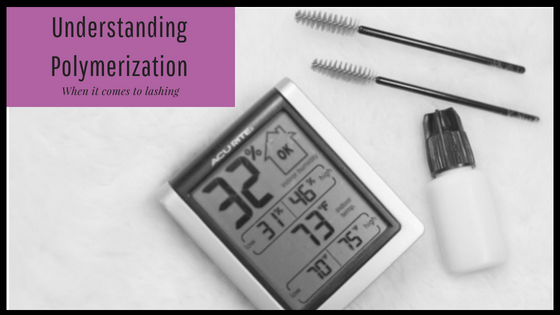Summer is in full swing and if you are in a climate like ours in Charlotte, then you understand the effects of humidity! As if the the sticky, sometimes unbearable, humid temperatures outside aren’t enough to deal with, humidity can also cause problems inside your lash studio. We’ve written before about proper humidity levels and adhesive storage, but today’s blog focuses on something we haven’t talked about before…polymerization.
According to Merriam-Webster, polymerization is “a chemical reaction in which two or more molecules combine to form larger molecules that contain repeating structural units.” That’s exactly what happens in lashing when we refer to ‘Shock Polymerization’ in lashing except not in a good way. Confused? Read on…
Simply put, Shock Polymerization occurs when your adhesive cures too fast. It happens as a result of too much moisture. Excess moisture can actually cause the adhesive to micro shatter which can create “Blooming” (a white frost at the base of the lashes). As you might have guessed, this is bad news for your lash retention.
Of course, there’s some science behind the lashing process! As we mentioned before, polymerization is a term we use in lashing that isn’t always bad so don’t let the word scare you! Cyanoacrylate, the active ingredient in eyelash extension adhesive, must polymerize for the adhesive to dry or “cure”. The polymerization process turns the adhesive from liquid to solid which is what you want when lashing. This is why we recommend refreshing your adhesive drop every 15-20 minutes. Polymerization is only bad when it cures too quickly (shock polymerization).
Our ILP Classic Lash Training course goes into great detail about humidity levels, adhesive storage and temperature ranges. There’s so much to learn before you start lashing. Let us help you get started with a career in lashing with our next course set for August 12-13 in Charlotte.




